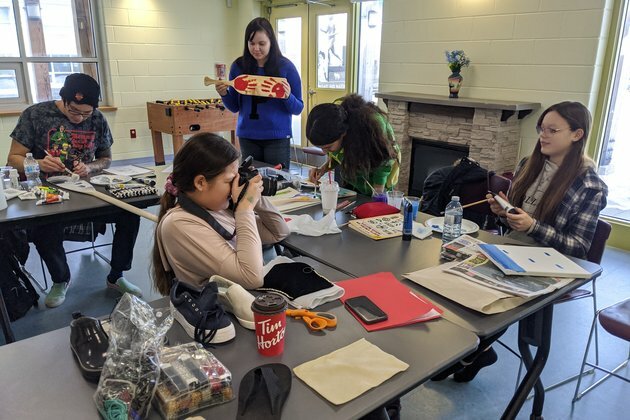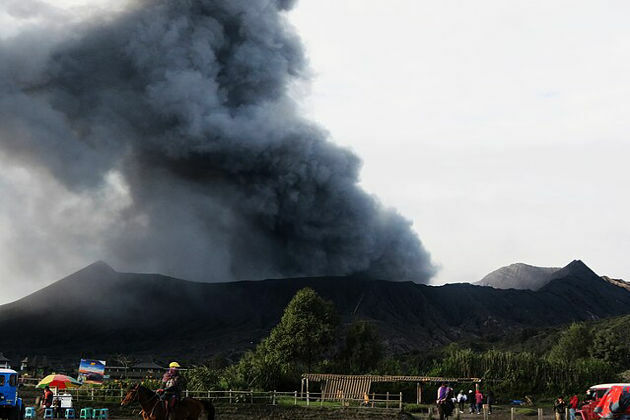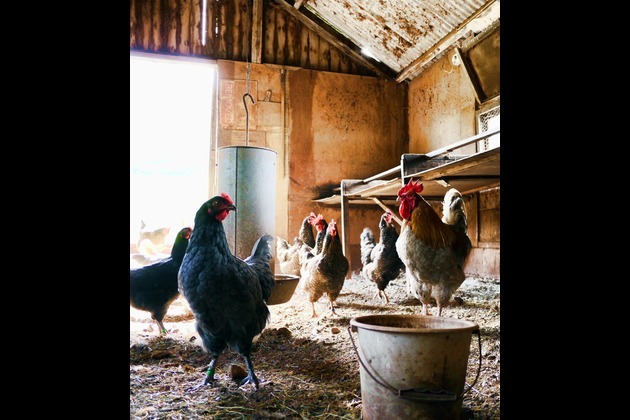Indigenous youth are playing a key role in solving urgent water issues
The Conversation
19 Mar 2021, 04:10 GMT+10

Unsolved environmental problems, a national mandate to uphold treaty responsibilities and a new appreciation for positive treaty relationships are leading some water researchers to consider new approaches to their work. They are examining how water monitoring practices that are conventionally considered strong, can be improved.
Recent research examined how water quality monitoring in the lower Grand River and nearby Lake Erie can inform management to address prolific growth of nuisance algae. Nuisance algae affect wildlife habitats and fishing, as well as swimming and boating. This work is part of the Lake Futures Group at the University of Waterloo and Global Water Futures, Canada's largest water research collaboration.
This research was a collaboration with Music for the Spirit & Indigenous Visual Arts, a youth-led program that provides space for expression, learning and guidance for over 40 students at Six Nations of the Grand River.
Indigenous and treaty perspectives
Some water researchers are looking to a teaching from the Mi'kmaw culture that can enable a more holistic understanding of a watershed, including interactions between land and water and the social-ecological contexts surrounding them. Etuaptmumk, or "Two-Eyed Seeing" is about learning to see from one eye with Indigenous knowledge, from the other eye with western science and integrating the knowledge to see with both eyes open.
With such approaches, water scientists and managers look to Indigenous cultural teachings, community intergenerational stories and records as well as western science.
Read more: It's taken thousands of years, but Western science is finally catching up to Traditional Knowledge
The Grand River - named O:se Kenhionhata:tie ("Willow River") in the Kanien'keha:ka (Mohawk) language - is Southern Ontario's largest and most populated watershed. It drains into the eastern basin of Lake Erie - named from Erielhonan in the Iroquoian language spoken by the Erie people, meaning "long tail." About 80 species at risk are found in the watershed. The Grand River and contributing waters are home to more than half the fish species in Canada, resulting in a world-class fishery.
The watershed is home to roughly one million people who reside in 39 municipalities and two First Nations territories: the Six Nations of the Grand River First Nation - Canada's largest Indigenous population and the only place in North America where all six Iroquois nations reside - and the Mississaugas of the Credit First Nation.
Three treaties apply to the Grand River watershed:
The Two-Row Wampum that recognizes distinct but equally valued cultures living together but separately, without interference from each other.
The Dish With One Spoon, a treaty to collaboratively maintain the health of lands, waters and wildlife.
The Haldimand Proclamation of 1784, which designated six miles (about 10 kilometres) on either side of the Grand River - from headwaters to Lake Erie - as permanent Six Nations of the Grand River territory. Six Nations Lands and Resources notes that today the Six Nations of the Grand River community lives on approximately 46,000 acres, a base that is less than five per cent of the original 950,000 acre grant from the Haldimand treaty.
Building relationships, reciprocity
Taking a collaborative research approach of documenting Six Nations youth perspectives on water with Music for the Spirit & Indigenous Visual Arts involved a shared process:
Investing time to build relationships (our process required over a year of building relationships and developing the exhibit concept). Community members Paul General (former Six Nations wildlife manager and artist) and Tayler Hill (youth leader with Music for the Spirit & Indigenous Visual Arts) also supported this process.
Ensuring participants can contribute in meaningful ways. For example, I, Elaine, as a doctoral researcher, had to grow intercultural competency. The youth artists further developed their skills to ensure they could produce either independent or collaborative artworks for this project.
Ensuring reciprocity is part of the process. In this project, Six Nations community members asked to have youth insights amplified by seeking opportunities where they could be widely shared.
Acknowledging and enacting reciprocity means that collaborative research should not be pursued to serve the needs of western science, and that research is flexible to accommodate community interests.
The above considerations shaped the development of an ethical framework for the project. It is important to challenge ethical processes that apply a single set of western or empirical criteria to all activities, including those involving Indigenous communities. A growing literature can guide this process.
Together, we explored one way of sharing Six Nations youth perspectives with non-Indigenous community members and water managers.
Looking at the river: Many stories
Youth from Music for the Spirit & Indigenous Visual Arts used different artistic media accompanied by stories to describe their relationships with water. In some cases, these were their responses to the question: "What do you see when you look at the river?"
Themes that emerged were plastics pollution, Missing and Murdered Indigenous Women and Girls, drinking water, Grand River chemical spills and Waterlily (a cultural story transmitted in oral history).
Read more: The MMIWG report: A call for decolonizing international law itself
The youth art and stories were profiled in the Grand Expressions art exhibit. This exhibit was displayed at the Carolinian Cafe in Cayuga, Ont., near Six Nations territory on the Grand River, before being shared virtually due to the pandemic. THEMUSEUM in Kitchener, Ont., later featured the virtual exhibit.
Artist Ashley Cattrysse explored the connection between water and women. She wrote:
Artist Hannah Wallace-Lund contributed an image depicting summer camp participant Chase in front of water coolers holding a water drum. She wrote:
Articulating principles
An analysis of common themes in the youth's stories identified recommendations, most of which were statements of values. These were synthesized with perspectives from 21 water managers, western scientists and subject-matter experts interviewed as part of the larger study.
The result was 10 principles for guiding water monitoring and management. For example, that water is finite; impacts are shared but are unequally distributed; we will manage as stewards and treat waters as living; and that managers should measure and enhance community experiences as part of watershed health.
Our co-created, arts-based approach can be effective for engaging youth and diverse community members not just for water management but all aspects of sustainable planning.
Relationships formed during this research lay the foundation for meaningful Canadian-Indigenous cooperation, especially in the context of our most important shared resource: water.
This exhibit would not have been possible without the efforts of Tayler Hill, Jordon and Whitney from the Carolinian Cafe and Laurel McKellar at THEMUSEUM. Elaine notes there are no words to express appreciation for the cross-cultural bridging that was supported by the positive and energetic involvement of Richelle and Tayler. Thank you.
Authors: Elaine Ho - PhD Candidate, Social and Ecological Sustainability program in Integrated Water Management, School of Environment, Resources and Sustainability, University of Waterloo | Richelle Miller - Community partner, Co-ordinator of Music for the Spirit & Indigenous Visual Arts 
 Share
Share
 Tweet
Tweet
 Share
Share
 Flip
Flip
 Email
Email
Watch latest videos
Subscribe and Follow
Get a daily dose of Malaysia Sun news through our daily email, its complimentary and keeps you fully up to date with world and business news as well.
News RELEASES
Publish news of your business, community or sports group, personnel appointments, major event and more by submitting a news release to Malaysia Sun.
More InformationSoutheast Asia
SectionLeaked call pushes Thai govt to the brink as allies waver
BANGKOK, Thailand: Thailand's government is facing its biggest crisis in nearly a year, as Prime Minister Paetongtarn Shinawatra's...
Volcanic ash grounds flights to Indonesia, disrupts travel to Bali
LEMBATA, Indonesia: Indonesia's Mount Lewotobi Laki Laki erupted dramatically on June 18, generating substantial ash and smoke plumes....
Nepal Police Search for Journalist Who Reported on Political Family's Business
In Nepal's latest attempt to silence online speech, police are trying to arrest a well-known journalist who published on his YouTube...
"Disheartening and unfair": Diljit Dosanjh's manager on 'Sardaar Ji 3' controversy
New Delhi [India], June 25 (ANI): Diljit Dosanjh's manager, Sonali Singh, shared a long note highlighting the ongoing criticism against...
Union Minister Shobha Karandlaje welcomes 224 Indian nationals returning from Israel under Operation Sindhu
New Delhi [India], June 25 (ANI): Under the Operation Sindhu, Union Minister Shobha Karandlaje received 224 Indian nationals who returned...
ISPL introduces a new franchise from New Delhi following the massive success of Season 2
New Delhi [India] June 25 (ANI): The Indian Street Premier League (ISPL), India's pioneering tennis-ball T10 cricket league, has announced...
Business
SectionTariffs, inflation raise stagflation risk as Fed eyes next move
WASHINGTON, D.C.: U.S. business activity showed signs of softening in June while inflationary pressures continued to build, driven...
U.S. stocks extend rally as Israel and Iran make peace
NEW YORK, New York - U.S. stock markest closed sharply higher on Tuesday as a truce entered into between Irsael and Iran after 12 days...
Meta unveils Oakley AI glasses as next step in wearable tech push
MENLO PARK, California: Meta is taking another swing at smart eyewear—this time with a sporty edge. The company announced a new partnership...
Markets rally on hopes Iran won’t disrupt oil flow
NEW YORK CITY, New York: U.S. stocks went up and oil prices fell this week as investors hoped that Iran would not block the global...
Water guns become symbol of anti-tourism anger in Barcelona
BARCELONA, Spain: Residents of Barcelona have devised a novel way to protest the presence of tourists in their city. Using a cheap...
Bird flu plan in the works as USDA weighs export, vaccine risks
CHICAGO, Illinois: For the first time in history, U.S. officials are considering a coordinated plan to vaccinate poultry against bird...













